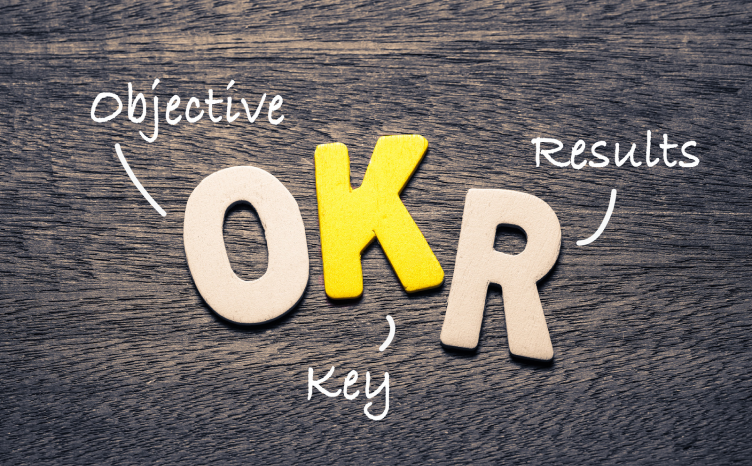How OKRs Can Help Your Business Grow
5 Mins Read
Published on: 18 January 2021
Last Updated on: 25 February 2025

toc impalement
Building a business is one thing but getting it to grow is another thing altogether. To scale a business requires a lot of consideration. You need to think about your employees’ dedication, your company’s goals, vision, and your capital. Getting these variables to enhance your business to get more customers for your business and increase your sales considerably is the challenge.
The Growth of Startups

As far as startups are concerned hard work and focus are needed to get a business to grow. Scalability is how well a business can manage despite the pressure for a great outcome. So if the production increases, will the company be prepared for the workload? This means that there is a need for a great deal of dedication.
This is not hard for startups; as long as there are effort and ambition from employees’ teamwork does get the job done. Company growth requires the need for additional resources to obtain more revenue. It is a decision that the company has to make not necessarily due to an increase in demand for its product but because there is an opportunity for the company to expand.
There is a lot of deliberation when it comes to startups. The business has to be established and the company is branding, messaging its target audience, refining its product, figuring the competition, and minimizing its costs. OKRs as well as SEO OKRs allow businesses to prioritize their goals and establish a system that can guide their employees to set their goals in order to actualize the company’s vision.
What Is OKR?

One way that small businesses can grow beyond their horizon is by setting achievable and significant goals. And this is where OKR steps in. OKR is a popular objective and result management strategy.
OKR is not just about tracking progression. In fact, the whole process is also about creating and aligning goals with critical results. So that goals become more achievable and measurable.
OKRs were invented by human resource personnel back in the 70s. The method was popularized and standardized by Intel. The primary reason behind its popularity is its collaborative nature. It can assimilate and use different components to create a cohesive sense of objective and critical results.
Understanding OKR

OKRs are great for tracking objectives and goals. However, since we are already on the topic of understanding OKRs, it is only natural to understand two of its essential aspects.
OKR or Objective Key Results are made up of two parts. The first is the Objective part, and the second is the Key Results part. Objective and Key Results are aligned to create OKR.
As per OKR coaches, Objectives must be concise and focused. This would help the team to understand them. Secondly, the Key results must be measured in time and not quantity.
To simplify the process of setting, tracking, and aligning OKRs, many businesses use OKR software. These tools help teams set clear objectives, monitor progress in real-time, and ensure alignment across different departments. By using OKR software, organizations can streamline goal-setting and improve overall performance.
Here are more detailed definitions of the critical components that make up OKRs.
Objective
As per several OKR coaches, the objective part of the deal is all about understanding and tracking what an individual could do in a given time period. But it is so much more than that.
As per OKR coaches and research, the Objective should be focused and accommodating. It should consider individual limitations and skill sets.
- Some of the most common and popular high-level objectives are:
- Improving customer experience
- Increase recurring revenue
- Scaling Performance
- Reducing production line mishaps
Key Results
The next aspect of the whole deal is the Key Results part. In the simplest of terms, Key results are the desired results we want to achieve to reach a specific goal. One common mistake many people make is confusing desired outcomes with actions.
While setting OKRs, you need to demarcate between the objectives and the actions you need to take to achieve that objective. Suppose improving sales is your Objective. Then, reaching out to clients on time and creating a network are the actions.
One Objective needs multiple action items, rather than the other way around. This is the general thumb rule that people need to remember,
Matching Objective With Key Results
One essential aspect of setting OKRs is matching the objectives with the key results. To do this, you need to understand the Objective and set multiple action items.
Action Items must be plausible and should be towards one specified goal. Otherwise, the whole system might end up collapsing. Therefore, you need to create a systemic flowchart or a progression line to check how objectives and progression are tracked.
Apart from multi-actionable items, you also need to set stepwise actionable items. This step-by-step approach enables employees to systematically work towards a specific goal. This, in turn, allows employers to track the end goal clearly and systematically.
How OKRs Help Businesses To Grow

OKRs is an acronym for Objective Key Results. They enable businesses to define specific goals that are measurable and time-specific. Managers’ outline to their teams what is expected of them, and it is up to the employee to set their targets and measure them. It is a process, and team leaders should allow their team members to grow and define their goals according to the outlined company strategy. The goal-setting and allowing of employee creativity and ambition make OKR a successful management framework for business growth.
The following are the benefits of OKRs for companies:
- They enable employees to stretch themselves by using their creativity to achieve their goals. The idea is to encourage individual obligation to the contribution of the success of the company.
- Transparency allows the team to work towards the same goal and realize how their output contributes to the organization’s growth.
- It also allows for accountability. This is whereby a specific team is assigned an OKR, and they get to account for its success. The same OKR can also be assigned to different groups to allow for flexibility in collaboration.
- OKR methodology is straightforward. It allows companies to reduce time spent on strategizing and a shorter cadence is employed to enable a company to implement and assign their goals in a short period.
Setting OKRs benefits the company if the emphasis is on effort, performance, and ambition. A company does not necessarily need to go by the OKR handbook; it should be flexible in its adoption of OKR methodology according to the company’s specific needs.
Keep following for more such content.
Read Also:


















Comments Are Closed For This Article